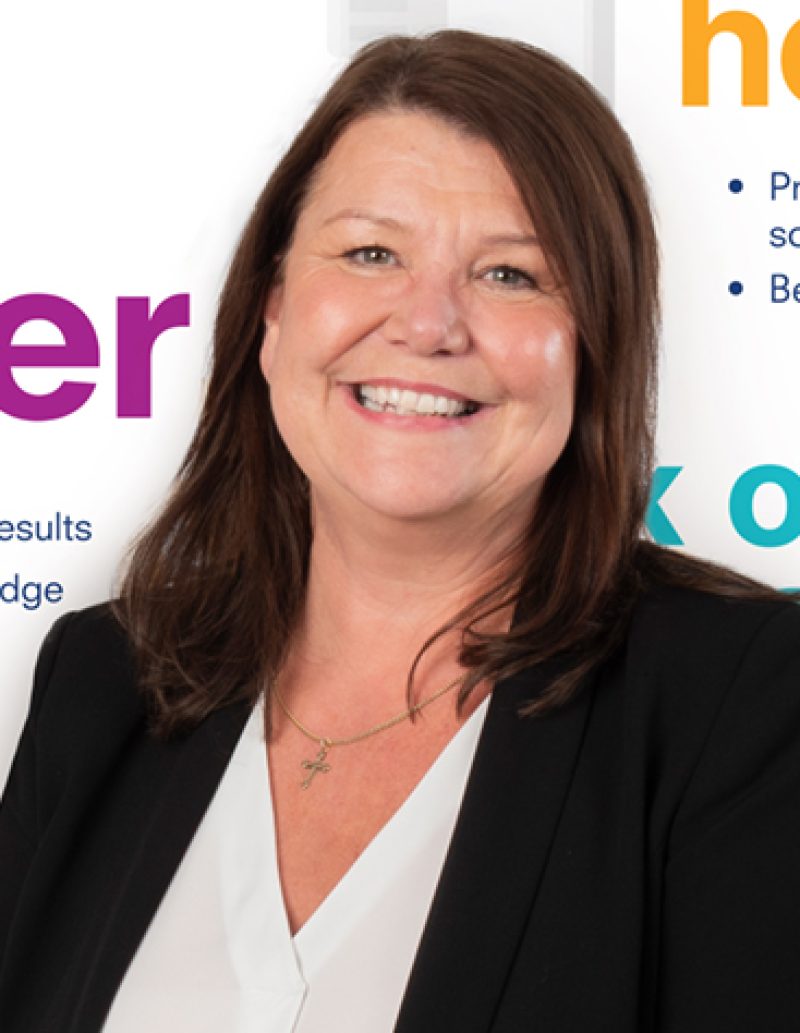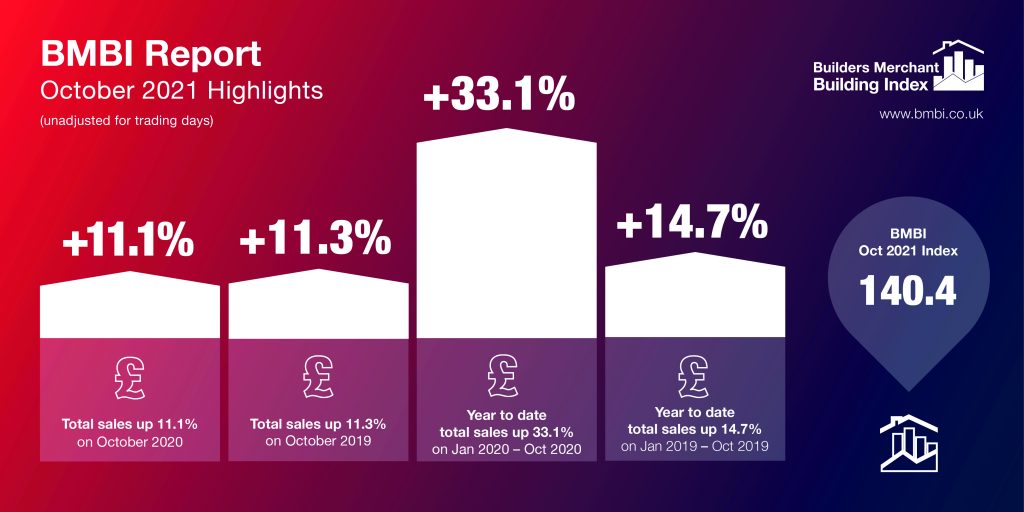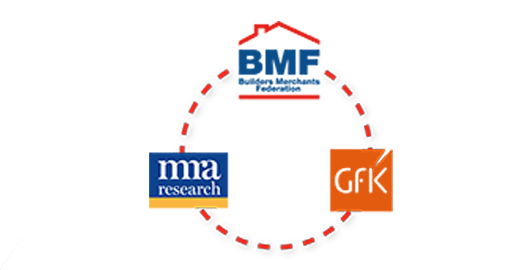RCI Column – BMBI year-on-year sales growth in double digits but returning to trend

The latest figures from the Builders Merchant Building Index (BMBI) reveal that builders’ merchants’ year-on-year value sales to builders, roofers and contractors were 11.1% higher in October 2021 compared to the same month in 2020.
Eight out of 12 categories sold more over the period, despite one less trading day in October 2021. Timber & Joinery Products continued to top the list (+28.3%), while Landscaping (+9.5%) and Heavy Building Materials (+6.5%) grew more slowly. Like-for-like sales, which take trading day differences into
account, were up 16.4% year-on-year.

Compared to October 2019, a pre-pandemic year, total merchant value sales were up 11.3% in October 2021, with two less trading days. Meanwhile, four categories sold more, with overall growth driven primarily by the strength of Timber & Joinery Products (+34.7%) and Landscaping (+27.6%). Like-for-like value sales were 21.9% higher.
Last three months
Total sales in the three months from August to October 2021 were up 16.1% on the same period in 2020. Eleven of the 12 categories sold more, with Timber & Joinery Products (+38.9%) especially
strong. Compared to the same three months in 2019, sales were 17.9% higher, with one less trading day in August to October 2021.
Month-on-month
Total merchant sales were down 5.1% in October 2021 compared to September 2021, with one less trading day in October. Meanwhile, Timber & Joinery Products (-6.3%) and Landscaping (-13.6%) were the weakest categories.
Index
October’s BMBI index was 140.4, helped by another robust performance from Timber & Joinery Products (181.0). All bar one category recorded indices above 100, including Heavy Building Materials (130.8).
Lynn Street, sales and marketing manager at Midland Lead and BMBI’s expert for lead, commented: “The lead industry, like others, is affected by short-term issues such as Brexit and the driver shortage. We believe it will take a while for it to settle back to normal levels. Hefty price rises for energy, raw materials and packaging are hitting the industry, and shortages in the supply chain are affecting buying habits.
“But it’s sustainability which is rightly at the top of the industry agenda. It’s clear that legislation is needed to force construction to work towards the target of all buildings becoming net zero before 2050.
“Builders’ merchants and other construction materials suppliers source and provide to meet demand, and the cost to the end user will always be a priority until legislation dictates otherwise.
“As a sustainable material, lead is at the forefront of building materials because, by its very nature, it’s the most sustainable roofing product available. Lead alternatives cannot be recycled or reused indefinitely like lead. But it’s up to manufacturers to get in front of specifiers and buyers to demonstrate what is needed to reduce the negativeimpact that construction has on the environment.
“Midland Lead is the first lead manufacturer to be awarded an Environmental Product Declaration (EPD) for its cast sheet lead. An EPD transparently communicates the environmental performance or impact a product or material has over its lifetime. We worked hard to achieve this, but does it influence purchasers’ decision to use real lead? The answer is still yes and no, but construction is becoming more aware of its impact on the environment.
“Legislation needs to change significantly to help create a truly sustainable future. So, keep your eye on that and be aware of your business’ environmental impact because change is on its way.”
This column was published in the January issue of Roofing, Cladding & Insulation Magazine (RCI).



